Northwest beef extension team Territory study tour
A GrazingFutures case study
Written by Kaitlyn Hay, Queensland Department of Agriculture and Fisheries
Invisible state borders often separate Australia’s agriculture practices. However Northwest Queensland and the Northern Territory (NT) (while different) share land types, highly variable climates, and most importantly, face similar production challenges.
The Department of Agriculture and Fisheries northwest beef extension team, recently embarked on a ten-day study tour. The tour agenda included the Kidman Springs BeefUp forum and field day, staged by Meat and Livestock Australia and NT DITT, and several property tours. Their primary objective however was to learn more about the Easy P research project.
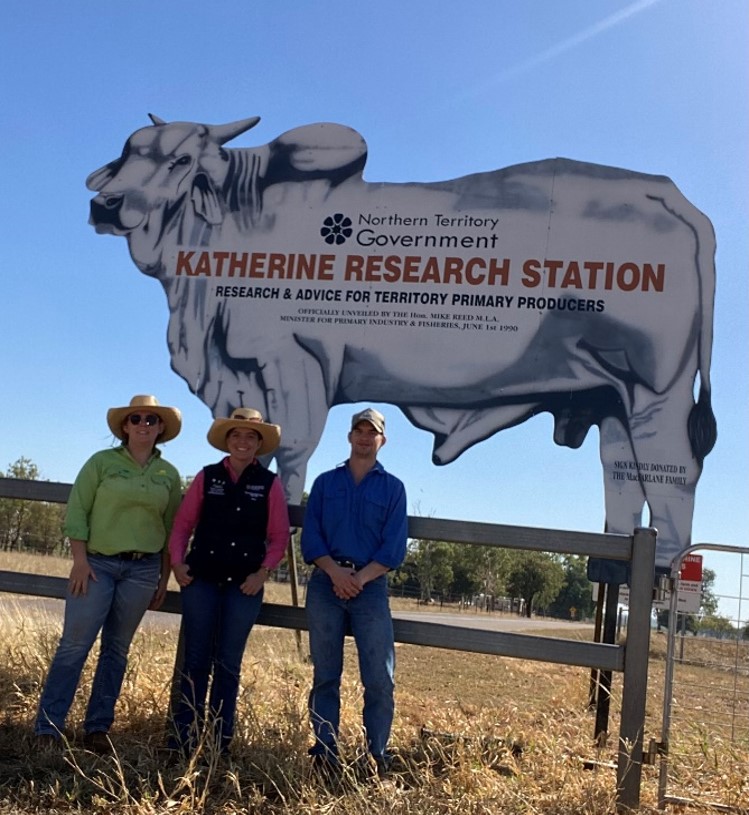
The trip was provided by the GrazingFutures Livestock Business Resilience project, which is jointly funded through the Australian Government’s Future Drought Fund and the Queensland Government’s Drought and Climate Adaptation Program.
The study tour enabled extensive insight into Northern Territory land types, management practices and beef production.
1. Katherine Research station
The Katherine Research Station houses some of the Select Brahman and tropical composite cattle that are bred as part of NT DITT’s long-term selective breeding programs and genetic research projects.
Each year, once the data for the Repronomics II project has been collected, the females not selected to be replaced into the breeder herd and the bulls not selected to be kept for matingthe animals not selected for the Repronomics herd, are made available to the public via auction. In 2022, the top cow reached $10,000. On the contrary, the associated bull auction was less successful, believed to be a consequence of the poor season.
The northwest beef extension team was provided an overview of some of the projects underway in the NT, including the self-herding trials that have begun in the south. Self-herding trials use an “attractant station” that encourages cattle to associate visual, auditory and smell cues with a dietary reward. As such, when attractant stations are moved to underutilised areas, the cattle follow, grazing areas rarely frequented and evening out utilisation. Self-herding strategies also provide some predictability around mustering.
Similar practices have potential to translate well in northwest Queensland if implemented successfully.
2. Sunday Creek
Sunday Creek is a 220,000ha beef cattle family-owned business located 30 km west of Daly Waters. Owned by the Stockwell family, the property runs a 7000 head self-replacing breeder herd of Droughtmaster-cross cattle. Peta Stockwell, the third generation of Stockwells on Sunday Creek, kindly provided a tour of their property.
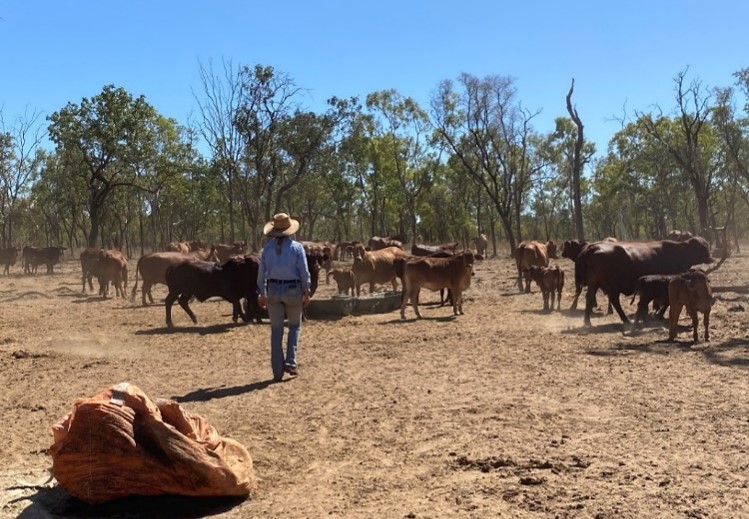
The pastures are made up of native species including blackspear grass, kangaroo, and bluegrasses with some introduced species. These included buffel and Sabi grass, as well as stylos present throughout.
The Stockwells target the live export market, however in recent times, have also sent cattle south into Queensland, taking advantage of competitive prices. They are producing a strong line of cattle, culling for temperament, and focusing on polled genetics. Evidently, the Stockwells have clear direction within their business, as can be easily seen in their management practices and herd quality. Sunday Creek is a testament to cattle producers in northern Australia and are an example of a successful family business.
3. Mathison Station
Mathison Station is a 65,000ha family-owned beef cattle business located 100 km southwest of Katherine. The property currently runs 2,500 self-replacing angus-brahman cross cattle. The property is predominantly native pastures with heavy tree cover and stylos present. Jay and Bec Mohr-Bell purchased Mathison in 2011, a month prior to the banning of the live export trade. At the time of purchase, the property had very little infrastructure.
The Mohr-Bells focus on herd fertility and temperament in their beef cattle breeding program. Like the Stockwell family, the Mohr-Bells produce cattle for the live export market. However in contrast, their male cattle are kept entire. Jay and Bec have found that by doing so, they not only receive a 10c price premium, they also have better access to the export market. What’s more, leaving the males entire promotes fast growth, permitting quicker turn off than if they had of been castrated.
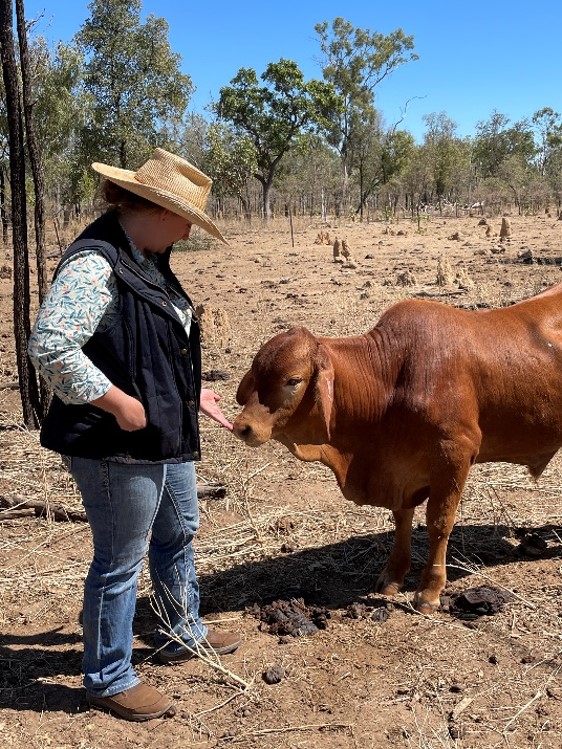
Jay and Bec Mohr-Bell are what many would call ‘early adopters’. Currently, they are working in conjunction with the University of Queensland, trialling the impact of feeding a high-quality feed to joined cows for a short period prior to lactation.
The Mohr-Bells also run several of their own projects. A walk over weigh unit in breeder paddocks drafts off desired animals at each watering point, reducing the time required at mustering.
Other endeavours include preparing country for cropping, developing laneways, and clearing along fence lines.
The Mohr-Bells feed supplements to their herd all year round as salt-based lick blocks. The main nutrients being urea, phosphorus, and sulphur, with trace minerals. Jay has worked with his supplier to develop a custom trace mineral block containing higher levels of cobalt after determining his cattle were seeking out the mineral.
Mathison Station is a good example of a business that has faced numerous hurdles. The property now looks to be ahead of the curve as the Mohr-Bells eagerly adopt and trial a combination of technologies, progressing them towards their goals of improving herd efficiency and reducing operation costs.
4. Kidman Springs BeefUp Forum
The Kidman Springs BeefUp forum was a one-and-a-half-day event. The BeefUp covered industry “hot topics” including:
- biosecurity
- pasture management and technology
- MLA’s CN30 project
- calf loss
- live export.
The event concluded with a comprehensive half-day tour of the research station.
Easy P
The paddock tour showed demonstrations of the ‘Easy P’ project. This was of particular interest to the northwest beef extension team, as an Easy P site near Cloncurry is in the early stages of development.
Easy P is demonstrating the benefits of supplementing phosphorus (P) in P deficient country by including P in dry season lick as well as and providing cattle access to bulk bags of P during the wet season. For many beef producers in the north, access to paddocks during the wet season is very difficult, and sometimes impossible. Traditionally, this has prevented many beef producers from supplementing P during the wet season, even though the benefits are well known. The Easy P strategy aims to eliminate the challenge of accessibility while demonstrating the benefits P supplementation can provide.
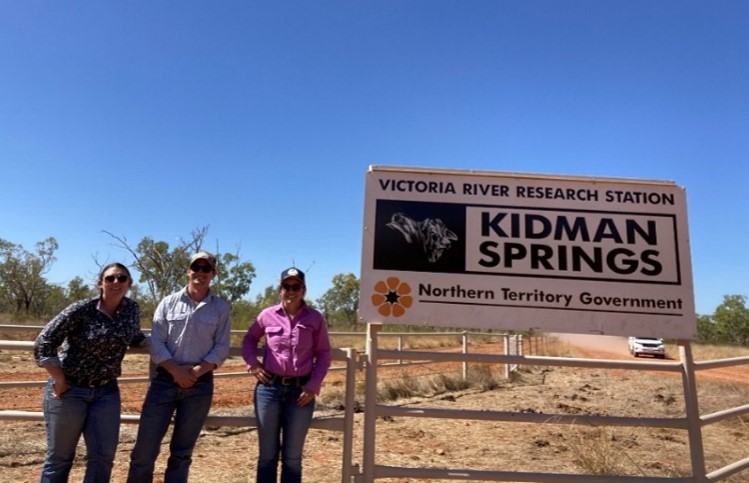
Viewing the trial site in-person cemented the impact P supplementation is making in northern Australia as the team saw many similarities in soil and pasture types with northern Queensland.
Most importantly, the study tour gave the northwest beef extension team the opportunity to discuss the proposed Cloncurry trial site with Principal Livestock Research Officer, Tim Schatz, who answered many of the team’s questions.
Shruburn
During the tour the group was shown the 30-year-old Shruburn trial sites. The sites are burnt either early or late in the season at two-, four- and six-year intervals. Furthermore, the trial is determining the best interval, and time of year, to see pasture benefits and timber thickening reductions.
Biocrusts
Arid soil ecologist, Wendy Williams, spoke to the group about boosting nitrogen capital with biocrusts, a foreign concept for many of the group. Wendy explained that the biocrusts act as a “living skin”. Biocrusts help to regulate soil moisture, sequester carbon, and fix significant amounts of atmospheric nitrogen. What is often seen as bare patches of earth, or slimy areas of algae around the yards, are in fact, cyanobacteria, facilitating soil surface stabilisation and regeneration.
High fertility breeding herds
The last leg of the tour saw NT DITT’s Gretel Bailey-Preston talk on the Select Brahman and Tropical Composite Herd. Coaxed with hay, the Select Brahman cows gathered briefly, boasting a body condition score of four to five. The Repronomics project, of which these herds are key, is determining identifiable genomic indicators of fertility that can be used to confirm the genetic merit of females and increase the accuracy of the fertility Estimated Breeding Values (EBVs).
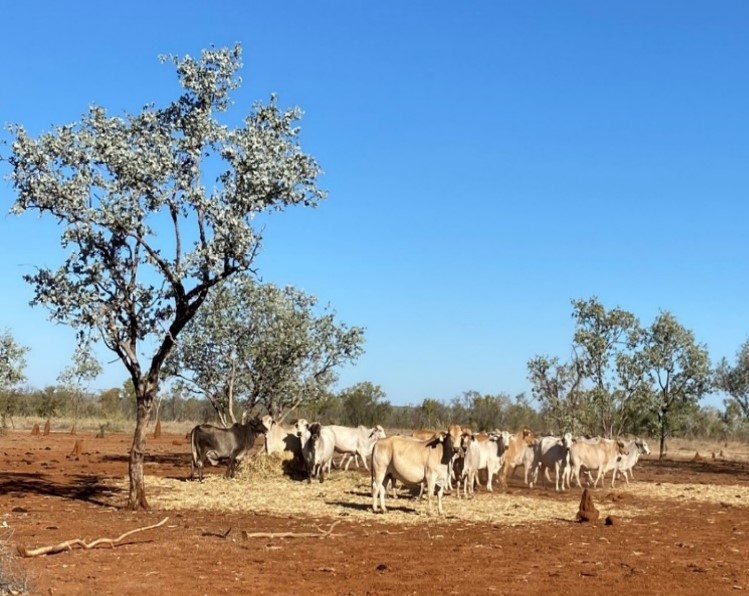
Importantly, the data from these improved EBVs is allowing producers to make informed selection decisions without needing to collect individual data.
Fertility is the primary driver of selection for both herds. At the weaning muster, any cows that are empty or dry (not lactating) are drafted out of the residual breeder herd and sold at auction. However, Gretel explained that the project has developed to the point where most cows in that residual breeder herd are only missing one, or have never missed any calves, in their lifetime.
5. Newcastle Waters
Newcastle Waters, owned by Consolidated Pastoral Company, is located on the western side of the Barkly region of the Northern Territory. Its open plains, flood country and timbered sand hills can carry 65,700AE. As a result of networking at the Kidman Springs BeefUp, the team met Greg Dakin – the manager of Newcastle Waters. Although only taking on the position three weeks prior, Greg kindly gave the study tour team an overview of the property’s early weaning program. The program focuses on improving the body condition of the cow. Seeing the extent of the Newcastle Waters program highlighted what a program of this scale requires on the ground.
Insights gained during the study tour
After ten days, tactical car packing and lots of conversation, the team arrived back in Queensland.
The study tour stimulated significant discussion about the implementation of the Northwest Easy P site and provided many great networking opportunities.
Experiencing the country firsthand created valuable perspectives on NT beef operations, current research, and projects. Furthermore, the relevance of the work, and its ability to be translated to northwest Queensland, has sparked innovation and excitement within the northwest beef extension team.
The team, who are all relatively new in the role, found great value in spending time with their interstate mentors. The firsthand experience, knowledge of the NT research results, and insights from successfully operated NT properties, has equipped the team to better support northwest Queensland beef producers through the GrazingFutures Livestock Business Resilience project.
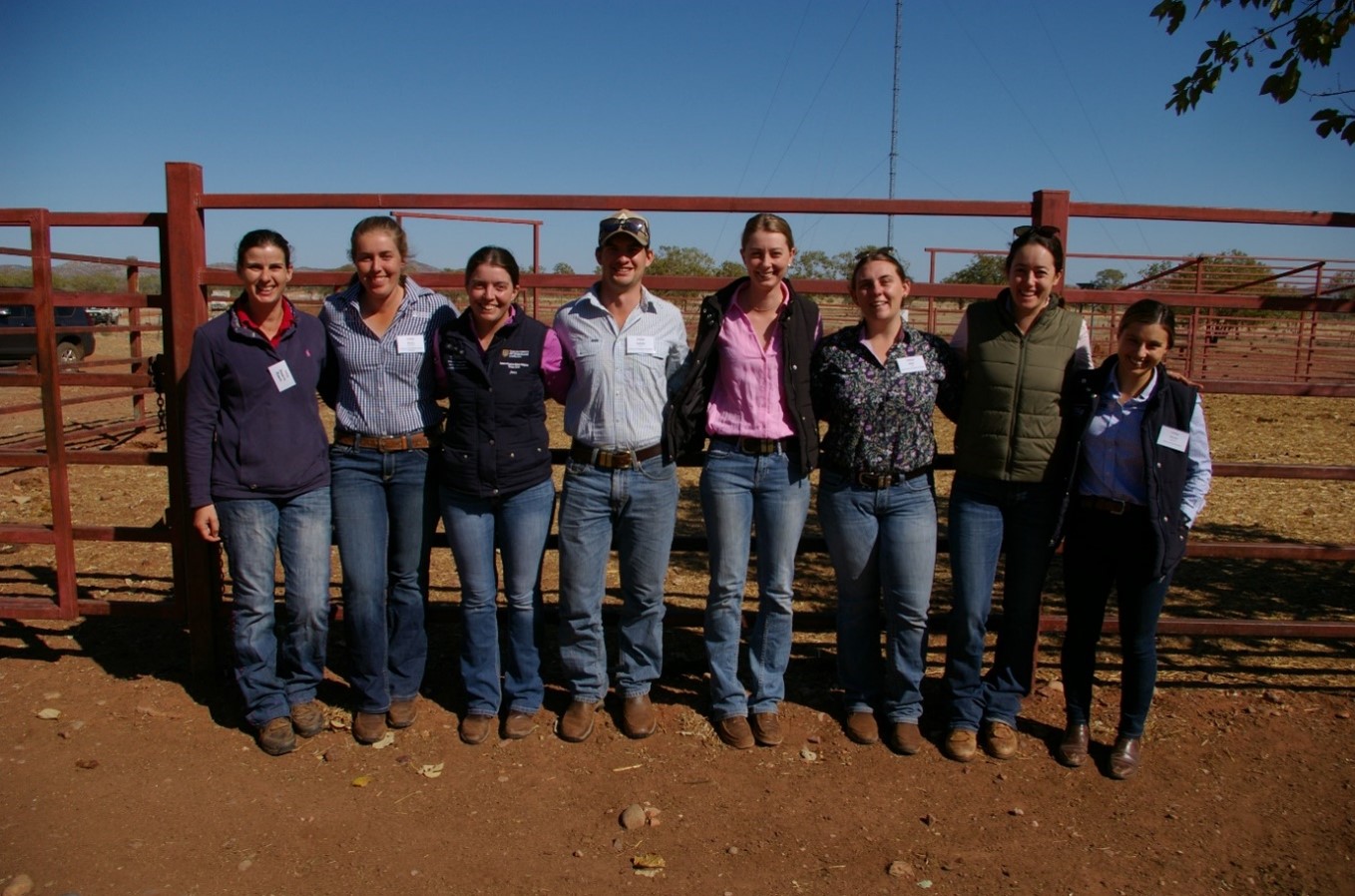
This has been an abridged version of the Northwest beef extension team Territory study tour case study. To read the full case study, click here.